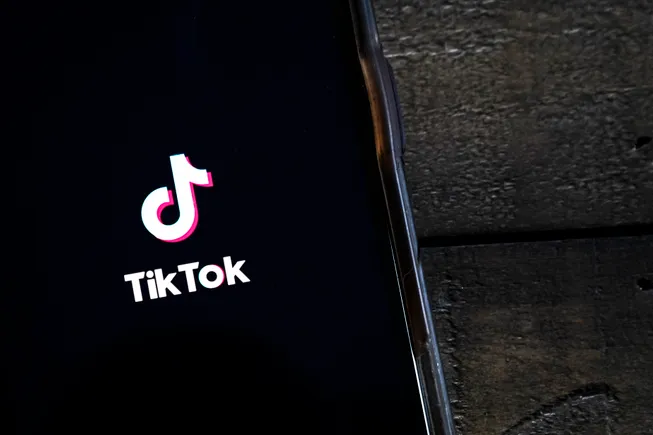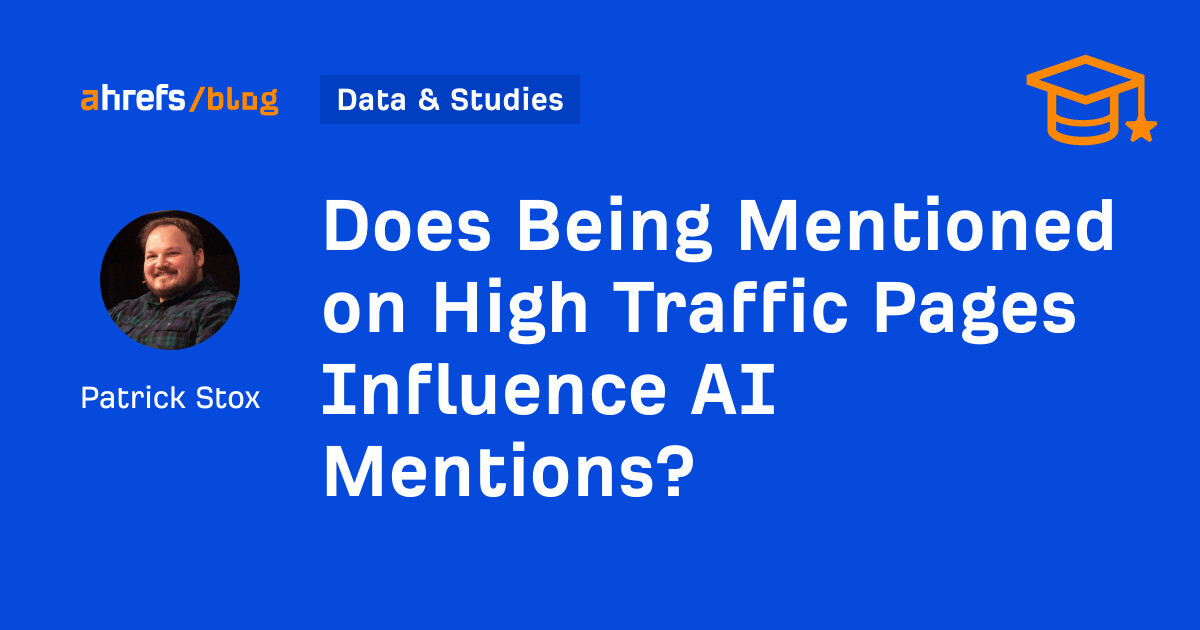The Halloween 2023 StoryScream: things to play and watch this spooky season
Image: A24Get ready for the holiday with a list of the latest in horror across film, TV, and gaming. Continue reading…
/cdn.vox-cdn.com/uploads/chorus_asset/file/24994361/https___cdn.sanity.io_images_xq1bjtf4_production_7ac3aed4b31746e41349fecefe1ea74f0123a994_1920x1080.png)
Castlevania: Nocturne is a revolutionary epic that does the franchise’s best games justice
Image: Netflix
Netflix’s first Castlevania animated series excelled by balancing its quiet, beautifully performed moments of human drama with explosive and artful action set pieces dazzling enough to evoke the feeling of playing Konami’s classic side-scroller for the first time. Despite the first show’s strengths, its regular issues with pacing and effectively cultivating characters from season to season made the idea of Netflix keeping the vampiric daddy issues ball rolling with Castlevania: Nocturne — a new spinoff series from executive producer Clive Bradley and co-directors Sam Deats and Adam Deats — a dubious one.
Nocturne both looks and feels a lot like its predecessor in terms of its focus on a tortured scion waging war against machiavellian, bloodsucking ghouls who fancy themselves undead gods who walk among mortal livestock. But while Nocturne could have easily settled and coasted on classic Castlevania vibes, the new show steps its game up considerably by using the franchise’s iconic lore to challenge your understanding of what it truly means to fight for freedom, equality, and fraternity.
In Alan Wake 2, you will never feel safe
Image: Remedy Entertainment
Horror drowns in symmetry: evil twins, two souls occupying one body, light and dark creating shadow, the Other Side, the Dark Place, the Upside Down. It is part of the cascading telemetry of fear utilized by our best horror artists, weaving nightmares out of pleasant dreams, whittling hell from the bones of our heavens.
Remedy Entertainment has created not only one of their best games to date but one of the best games of this already incredible year. Indeed, it is my game of the year. Alan Wake 2, Remedy’s first full-on third-person survival horror, is the culmination of everything the studio has been building toward and playing with, as ideas and mechanics, since Max Payne.
Junji Ito has a terrifying new short story collection just in time for Halloween
Photo Illustration by Cath Virginia / The Verge│Art by Junji Ito│Original story by Hirokatsu Kihara and Ichiro Nakayama
It’s been an interesting year for fans of Junji Ito. 2023 will be bookended by animated adaptations of the famed horror master’s work; it started with Netflix’s anthology in January, while Adult Swim’s take on Uzumaki is expected by the end of the year. And right in the middle is a new collection of his work in English with Mimi’s Tales of Terror. It’s a series of short stories inspired by urban legends — just the thing for dark, cold October nights.
The book is actually an adaptation itself, taking nine stories from Shin Mimibukuro — a collection of Japanese urban legends written by Hirokatsu Kihara and Ichiro Nakayama — and turning them into Ito’s particular brand of horror manga. They follow the story of a university student named Mimi who, for reasons that are never really made clear, keeps getting caught up in all kinds of supernatural shenanigans.
Creepy mobile game Franz is out on iOS and Android today.
I spent some time with it last week — it’s as unsettling as you’d expect an interactive narrative from the studio behind Pathologic to be.
Franz is the creepy thing that lives in your phone
Image: Ice-Pick Lodge
On Christmas Day 2021, a man took a crossbow to Windsor Castle with plans to kill Queen Elizabeth II. (He failed.) In court, the would-be assassin claimed he’d been egged on by a virtual companion named Sarai on the AI platform Replika. A virtual friend “always agrees with you when you talk with them,” warned an expert quoted by the BBC in an article about the saga last week, deeming the chatbot system dangerous. “It always reinforces what you’re thinking.” Including, it seems, regicide.
Virtual companions have become a popular novelty in the past few years, and the BBC article offers a pervasive truism about them: that real people are drawn to digital personas because they’re irresistibly attentive, affirming, and accommodating. It is an odd thing to consider as I check my phone for notifications from a gray-faced gremlin named Franz, who has kicked me out of her app so I can “watch dreams” after declaring herself my girlfriend and threatening to steal my skin.
The Fall of the House of Usher is Mike Flanagan’s most ambitious horror story yet
Image: Netflix
Since The Haunting of Hill House debuted in 2018, Mike Flanagan has steadily built up an impressively diverse anthology of limited series on Netflix, with releases coming on a near-annual basis. The intervening years have included a romantic puzzle box, a small-town vampire story, and a collection of teen ghost stories. But with The Fall of the House of Usher — which is likely the final collaboration between Flanagan and Netflix — the showrunner has created his most ambitious story yet. It’s still the slow-burning human drama fans have come to expect, but this time, it tells a much more complex story that touches on everything from AI to the opioid epidemic, all viewed through the lens of gothic horror.
A loose adaptation of the works of Edgar Allan Poe, House of Usher makes its stakes clear from the very beginning. The story is centered on Roderick Usher (Bruce Greenwood), the patriarch of a billion-dollar medical empire who made his fortune on the back of the opioid epidemic. He also has six kids with five different mothers, and as the show opens, he’s in an old abandoned house confessing something to a local prosecutor: all of Roderick’s kids are dead, and it’s his fault.
Amazon’s Totally Killer is, like, such a fun slasher movie
Image: James Dittiger / Prime Video
Totally Killer never tries to hide what it is: a classic slasher movie fused with Back to the Future. And it turns out that adding time travel to the well-worn horror genre helps bring some new life to it in a way that actually feels pretty fitting. If you’re looking for a nostalgia-laced slasher to stream ahead of Halloween, this is it.
Initially, the movie is set in the present day, in a small town living in the aftermath of a trio of grisly murders that happened 35 years prior. That’s part of the reason why Jamie’s (Kiernan Shipka) mother (Julie Bowen) is so darn protective. She lived through the original ordeal in 1987, and since the “Sweet Sixteen Killer” was never caught, she lives in constant fear that it’ll happen again. And she’s right — a fourth victim appears in 2023, seemingly with the same masked killer behind it.
Hulu’s No One Will Save You is taut, minimalist sci-fi horror
Image: 20th Century Studios
No One Will Save You wastes no time getting started. After a brief setup, it gets right to the action: a home invasion that’s actually an alien invasion. What follows is an incredibly tense, surprisingly quiet mix of sci-fi and horror, just the thing for a fall evening at home.
The movie — which is streaming now on Hulu — comes via writer and director Brian Duffield, who previously wrote similar genre twists The Babysitter and Love and Monsters. It centers on Brynn (Kaitlyn Dever), a young woman who lives alone in a big, isolated house and who — for reasons that aren’t clear until much later in the story — is either ignored or hated by basically everyone in town. But she keeps herself busy making dresses, constructing a model village, and writing letters to her childhood friend.
Four very different horror movies from TIFF 2023
Image: TIFF
This year is shaping up to be a good one for horror, particularly on the festival circuit. Things kicked off nice and early at Sundance with the impressive quartet of Birth/Rebirth, Talk To Me, In My Mother’s Skin, and Infinity Pool. This month at TIFF, meanwhile, I watched another four movies that each add something interesting to the genre. What’s most impressive about these films is how, when combined, they really show off the breadth of what’s possible under the horror banner. You’ll wince and cover your eyes, but you’ll also laugh.
Sleep is the first feature from director Jason Yu, and it really taps into a common fear: namely, that something absolutely awful is going to happen when you’re sleepwalking. It follows a young couple — played by Jung Yu-mi (from Train to Busan) and Lee Sun-kyun (Parasite and the Apple TV Plus series Dr. Brain) — who live in a cozy apartment with their little Pomeranian and are preparing for the arrival of their first child.
The Last Voyage of the Demeter just isn’t scary enough to live up to Dracula’s legacy
Image: Universal
There have been so many cinematic adaptations of Bram Stoker’s Dracula and movies inspired by the 1897 novel over the years that it’s actually quite easy to understand some of the logic behind Universal’s The Last Voyage of the Demeter from director André Øvredal. There’s an undeniable brilliance behind the idea of building a feature-length story around one of the most haunting and cryptic chapters from a book that’s terrified multiple generations of horror lovers. But for all of The Last Voyage of the Demeter’s promise and its obvious desire to bring something new and inspired to the larger Dracula canon, the film never quite lives up to its full potential due to a curious lack of outright scares or a properly terrifying atmosphere.
Set in the same year that Dracula was actually published, The Last Voyage of the Demeter draws much of its inspiration from the seventh chapter of Stoker’s novel — a short collection of newspaper clippings and a captain’s log detailing how a small ship full of sailors was besieged and ultimately wrecked by a monstrous presence while traveling from Romania to England.
Oxenfree II is a perfect spooky sequel — and one of Netflix’s best games
Image: Netflix
When the original Oxenfree debuted in 2016, it was hard not to make Stranger Things comparisons: from the synth-heavy soundtrack to its story of kids grappling with the supernatural, the vibes were very similar. So it made a lot of sense when, in 2021, Netflix acquired Oxenfree developer Night School Studio as part of its burgeoning games effort. Now we have Oxenfree II: Lost Signals, which is an ideal sequel: it’s another creepy adventure game that stands on its own but also builds on the original in smart ways. It might also be the best video game released under the Netflix label so far.
As a game, not much has changed in Lost Signals. It’s a 2D adventure where you wander around a beautiful small town, doing lots of talking and fiddling with radios in order to commune with paranormal forces. The story is where things have progressed. The first game followed a group of friends, led by a teen girl named Alex, who accidentally opened a portal to another realm while partying on a nearly deserted island. Lost Signals takes place a few years later and puts players in the role of Riley, a 30-something who has returned to her hometown Camena after a long time away.
Black Mirror’s ‘Beyond the Sea’ is a slow-motion tragedy in the depths of space
Image: Nick Wall / Netflix
“Beyond the Sea” is the rarest breed of Black Mirror episode: the kind driven by empathy. Carried by a cast that includes Aaron Paul, Josh Hartnett, and Kate Mara, it’s equal parts character study and Twilight Zone creeping horror — a story focused less on the series’ typical social commentary than on three people whose impossible situation leads to an inevitably tragic end.
The episode is set in an alternate 1969 where two astronauts are midway through a six-year mission. Although their bodies are stuck in a cramped spacecraft, they spend most of their time inhabiting a pair of lifelike telepresence “replicas” on Earth. David (Hartnett) maintains an idyllic life with his wife and two children, taking his Neil Armstrong-esque celebrity graciously. Cliff (Paul) has a far more brittle relationship with his taciturn son and his lonely wife Lana (Mara), who he’s uprooted to live in a remote farmhouse. The mission proceeds smoothly until a horrific tragedy destroys David’s family and his replica. And to keep him from despair, Cliff lets David begin taking short jaunts in his body back home.
Black Mirror’s ‘Demon 79’ is a stressful slice of supernatural horror
Image: Netflix
While Black Mirror started out as a series exploring the myriad terrifying ways technology could impact our lives, it has since grown into a more general genre anthology. It’s nice when episodes have that techno focus, but it’s no longer a necessity. Case in point: “Demon 79,” a season 6 story that’s pure classic horror homage. Its premise wouldn’t be out of place in a collection like Tales From the Crypt or Cabinet of Curiosities. But don’t let the lack of Black Mirror-ness dissuade you — this episode is a blast of Hitchcockian scares with just the right kind of twist.
“Demon 79” — which was directed by Toby Haynes and written by Ms. Marvel’s Bisha K. Ali and Black Mirror creator Charlie Brooker — is centered on Nida (Anjana Vasan), a woman living a quiet, boring life in a small town in 1970s northern England. She works as a clerk at a shoe shop, doesn’t drink or ever really go out, and is constantly subjected to overt racism from her co-workers: a boss asking her to eat lunch somewhere else because of the smell or a fellow clerk openly reading anti-immigration pamphlets at work. She never speaks up for herself, just meekly goes about her day. But she has sharp, violent fantasies about murdering those who wrong her, including a local creep who’s become infamous for strangling his wife.
The System Shock remake is a delightful surprise
Nightdive Studios
The TriOptimum Corporation may have unleashed a murderous AI upon the world, but as I prepared to vaporize the hundredth empty soda can and food wrapper I’d picked off an eviscerated corpse, I couldn’t deny it had an A+ recycling program.
System Shock is one of the rare video game remakes that may actually be wonkier and more complicated than its source material, and I wasn’t expecting it to still be so much fun. The game is a nearly beat-for-beat reproduction of the ’90s Looking Glass classic, a groundbreaking early first-person shooter. But developer Nightdive Studios has updated the original with a striking visual style and some new gameplay elements. It’s a complex, sometimes frustrating experience that can’t replace its predecessor but offers a nicely similar taste.
Amazon’s Swarm is so close to being brilliant
Image: Amazon
Even if you aren’t the biggest Beyoncé fan, it’s impossible not to clock who the megastar at the center of Swarm, Amazon’s new comically-edged psychological thriller series from Donald Glover and Janine Nabers, is based on. Everything about the show’s story of a disturbed fan who finds murderous purpose in her obsession with a celebrity she doesn’t know is meant to make you think deeply about what it really means to lose yourself in parasocial relationships and online fandom.
At times, you can see how Swarm is tapping into a number of interesting ideas and attempting to weave them into a critical text meant to be read closely. But the show’s so committed to lampooning one real-world idol and her legion of stans that Swarm ends up feeling fixated on punching down rather than actually saying something insightful about how people can end up finding community in the most toxic digital spaces.
Servant’s finale was uncomfortable, confounding, and perfectly fitting
Image: Apple
Endings are hard. That’s particularly true for serialized mystery box TV shows, ones where plentiful juicy secrets hook viewers but the answers often fail to satisfy them. Putting a final bow on a story like that is a unique challenge. That’s part of what makes Servant, the Apple TV Plus psychological thriller helmed by M. Night Shyamalan, so interesting. Whereas many of these shows seem like they’re making it up as they go, Servant had a specific ending in mind. As Shyamalan told me ahead of the most recent season premiere, “The story wanted to be four seasons.” The show has been weird, confusing, and frequently nonsensical. But at least there has been the promise that it’ll all make some sense eventually.
So now, here we are at that ending. It has been, it’s an understatement to say, a strange journey — one full of “reborn dolls,” obsessive cults, plague-like afflictions, and quite possibly, a quarrel with God. People have died, and others have been brought back to life. And through it all, the core question at the center of the show — just who or what is Leanne (Nell Tiger Free), a nanny who is the titular servant — has remained unanswered. In the finale, someone finally comes out and asks outright, “What are you?”
Resident Evil 4 remake is a modern blockbuster with an old-school heart
Image: Capcom
We might be approaching a point where there are, in fact, too many video game remakes and remasters. Off the top of my head, there’s The Last of Us Part I, Demon’s Souls, Shadow of the Colossus, Metroid Prime, Dead Space, and soon, Silent Hill 2. But no one has gone as hard into this trend as Capcom. Part of the resurgence of Resident Evil has involved bottom-up remakes of games like Resident Evil 2 and 3. Those made a lot of sense, translating the clunky early PlayStation gameplay for modern audiences and resulting in some of the best games in the entire franchise.
With the remake of Resident Evil 4, the benefits of a remake aren’t so obvious. The original game still holds up well, a mix of high-octane action and classic survival horror, and it’s not like it’s inaccessible in 2023. RE4 launched on the GameCube and, since then, has been ported to a huge range of platforms, even virtual reality. So a big-budget remake doesn’t need to exist at all — and yet, I’m so glad it does. RE4 remains a hallmark of action game design, and this new facelift updates it just enough to turn it into a modern blockbuster — but one that retains its old-school soul.
Resident Evil Village is a great PSVR 2 shooter, if you can stomach it
Yes, Lady Dimitrescu looks even taller in VR.
Sony’s new PlayStation VR2 is a solid headset with a relatively small launch catalog, and one of its most exciting titles is a VR mode for Resident Evil Village, Capcom’s first-person 2021 survival horror shooter. Village draws inspiration from Resident Evil 4, which got a stellar Meta Quest 2 port back in 2021, so I had high hopes. And they weren’t unfounded. The free PSVR 2 update to Village offers great shooting with the device’s Sense controllers and makes a solid case for the headset’s quirky “face rumble” feature. If only other parts didn’t torture me as badly as Ethan Winters’ hands.
I’m not making any claims to fully reviewing Village in VR here. In my free time since the mode’s launch on February 22nd, I’ve been spending halting hours working through most of its first two sections, comprised of Ethan exploring the eponymous village and the castle of noted vampire giantess Lady Dimitrescu. I’ve been reviewing VR games since 2016, and I consider myself to have an average tolerance for simulation sickness; I’ve spent long stretches playing motion-heavy games like Horizon Call of the Mountain in PSVR 2. But Village has demanded constant diligence to avoid triggering some of the worst nausea I’ve had in years, and I don’t trust myself to power through the whole thing in a timely fashion.
Knock at the Cabin turns a home invasion into the ultimate trolley problem
Image: Universal Pictures
Knock at the Cabin, M. Night Shyamalan’s new home invasion thriller based on Paul G. Tremblay’s 2018 novel The Cabin at the End of the World, will mean very different things to audiences depending on the personal beliefs they bring to the film. By design, many elements of the movie’s doom-laden parable are open to interpretation, and it often feels as though Knock at the Cabin might actually want you to pause for a moment to debate with someone else about what’s happening. What there’s little question about, though, is that, with this project, Shyamalan’s working somewhere near the height of his powers to remind us all that there’s more to him than twist endings.
Very much like the original novel, Knock at the Cabin tells the story of Andrew (Ben Aldridge), his husband Eric (Jonathan Groff), and their adopted daughter Wen (Kristen Cui) as the small family heads out to a remote rental in the woods for a quiet, intimate vacation. The wilderness the trio journey into is as beautiful as it is serene — so much so that Andrew and Eric aren’t all that worried about Wen wandering off by herself to catch grasshoppers while the two of them relax. But when a hulking, uncannily gentle man named Leonard (Dave Bautista) suddenly appears from the woods imploring Wen to trust him, she has the sense to flee in terror before he even fully explains the awful reason he’s tracked her family down.
Talk To Me is a potent dose of unrelenting teen horror
Image: Sundance Institute
Stop me if you’ve heard this one before: a group of high school kids gets their hands on a cursed occult object, and after some fun and games, they end up being terrorized by a presence from the other side. It’s not the most original premise. But in Talk To Me — the directorial debut from brothers Danny and Michael Philippou, best known for their YouTube channel — it takes on a new urgency and ferocity with a story that races to its bloody, brutal conclusion without letting up.
The occult object in question is an embalmed hand that supposedly has the power to let people see, and be possessed by, the spirits of dead folk. The process is straightforward: you grab the hand, say “talk to me” to summon a random specter, and then say “I let you in” to invite them to inhabit your body. It’s creepy stuff, and easy to repeat, making it the ideal thing for viral video fame. Suddenly, high school kids in Australia are watching videos of what appear to be possessions, sometimes ending in a splash of blood. Of course, it’s just a hoax, right?
In My Mother’s Skin is a truly frightening and gruesome fairy tale
Image: Sundance Institute
It does not take long for In My Mother’s Skin to get gross. Within its first few minutes, the horror film from writer and director Kenneth Dagatan subjects you to some truly gruesome images of flesh-eating creatures, and honestly, it never really lets up. This is a blood-soaked fairy tale, one that mashes together folklore and history in a way that’s reminiscent of Guillermo del Toro’s defining work, Pan’s Labyrinth — only it’s a lot scarier.
The movie is set in the Philippines in 1945 in the waning days of World War II, with Japanese forces occupying the country. Things are bleak. Early on, you hear kids sharing horrible stories about the barbaric acts of the Japanese soldiers, and the family at the center of the story is getting by on whatever scraps of food they have left. It only gets worse from there. The story follows young Tala (Felicity Kyle Napuli) as she deals with a mounting number of problems. First, her father, who is under investigation for stealing gold from the Japanese, flees to help the Americans. Then her mother’s (Beauty Gonzalez) illness worsens to the point that she can’t leave her bed.
The Dead Space remake is a grisly cut of classic horror
Image: EA
In October 2017, publisher Electronic Arts unceremoniously shut down its studio Visceral Games, best known for shooter series Dead Space. Visceral was part of a dwindling breed at EA, devoted to linear high-budget games instead of a profitable “live service” model. One former employee noted that even the popular Dead Space 2 had been considered a financial failure, and the odds of a new one appearing in the near future seemed small. Yet tomorrow, EA will do just that, releasing a remake of the original 2008 Dead Space developed by its Canadian team Motive Studio. The Dead Space remake isn’t the path I’d have chosen for a resurrection of one of my favorite series. It also happens to be great.
Dead Space (2023) is most obviously a better-looking version of Dead Space (2008). Debuting on next-generation consoles and PC, it’s the kind of game where everything glistens, from the slimy explosive tentacles wreathing its futuristic spaceship to the ornate brassy ridges on protagonist Isaac Clarke’s suit. But beneath that surface, Motive has polished the foundations of Dead Space with changes drawn from its 2011 sequel as well as some simple yet effective new ideas. Rather than an elaborate reimagining in the vein of the Resident Evil 2 remake, a metanarrative experiment like the Final Fantasy VII Remake, or a user-friendly transformation of a tough-to-play classic like the yet-unreleased System Shock remake, it’s just an immensely solid update to an already excellent game — and one that couldn’t have come at a better time.
Birth/Rebirth takes the Frankenstein myth back to its feminist horror roots
Image: Shudder
There are multiple moments throughout director Laura Moss’ brilliant new psychological horror drama Birth/Rebirth that are so abjectly brutal that the festival goers who reportedly fell ill while watching the movie at this year’s Sundance could almost be forgiven for their theatrics. Birth/Rebirth’s story of two unlikely kindred spirits finding one another in the midst of tragedy is both disturbing and moving as it reworks pieces of Mary Shelley’s Frankenstein into a modern-day myth about motherhood and mortality.
Between its unflinching focus on the dangers of pregnancy and its depiction of the violence hidden throughout the US healthcare system, Birth/Rebirth might leave you feeling deeply unsettled. But as macabre as the movie gets, its grimness never comes close to feeling gratuitous, which is saying something given just how increasingly dark Birth/Rebirth becomes as its story unfolds.

 Fransebas
Fransebas 





























